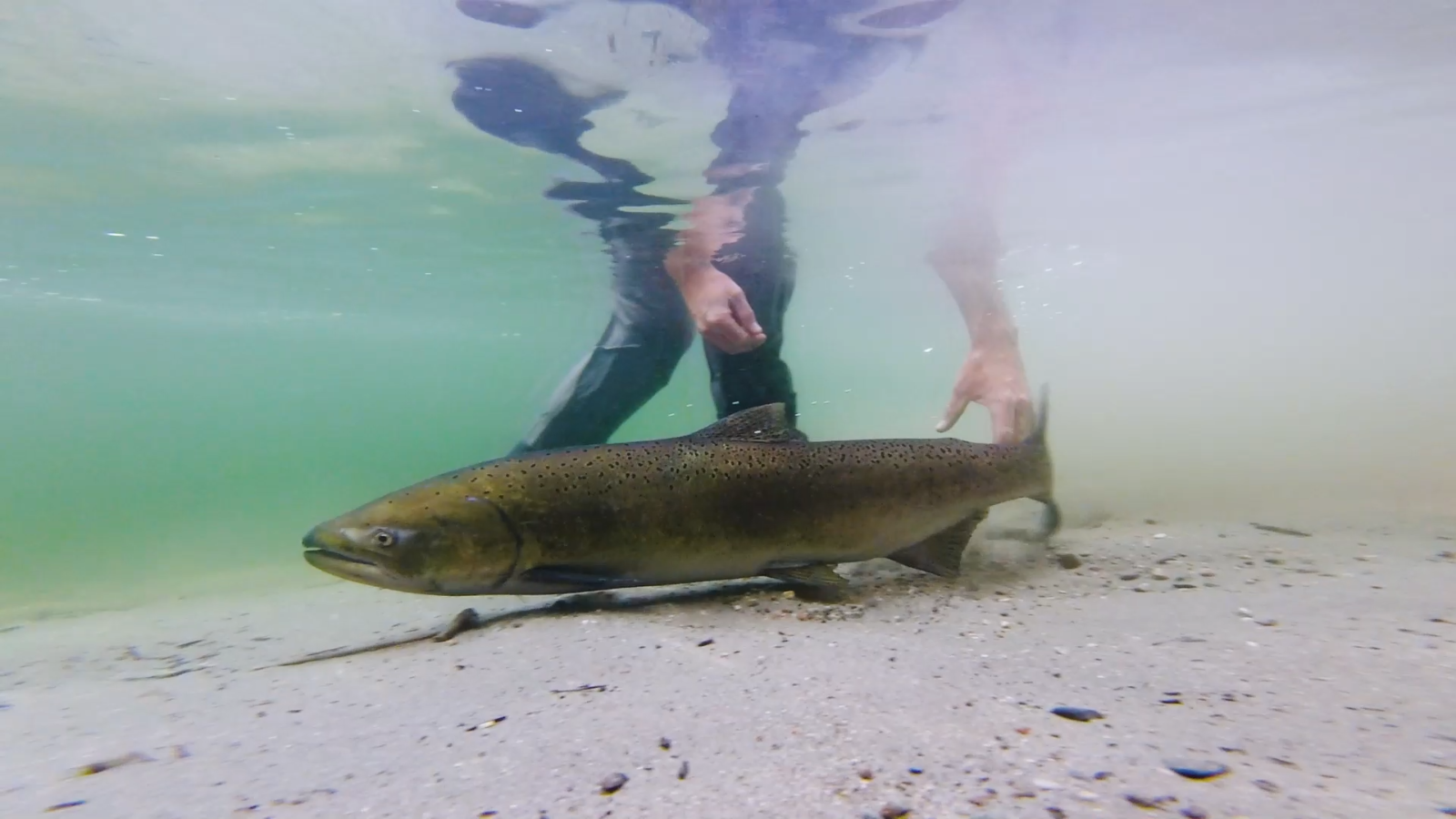Last August on a hot, slightly overcast day, dozens of people gathered on the shores of the Little Spokane River, across the bridge from Waikiki Springs Nature Preserve to celebrate the release of 51 Chinook salmon by Spokane Tribal Fisheries. Since the construction of Little Falls Dam in 1910, native salmon have been blocked from the Little Spokane watershed and emotions ran high as these fish, long displaced, once more swam in native waters.

Since the release, the Conservancy has received lots of questions about why the release happened, and how the fish have fared in the weeks and months following this educational event. Since there are many dams without infrastructure to allow for native fish passage between the Little Spokane River and the ocean, it is well-known that these fish, raised at the Wells Dam hatchery, wouldn’t be able to live out the life of a typical wild anadromous fish. However, the release of the Chinook gave fish biologists a chance to observe and track their behavior in their once native home—a vital step to educate the community and prepare for longer-term reintroduction strategies.
The 51 salmon released on August 6 passed rigorous health testing, making sure they were the strongest and best available. Prior to the release all the fish, quarantined together, had to be tested for disease and parasites, and receive a clean bill of health, in order for the release to occur. Once they received positive test results, they were netted, loaded into a fisheries truck, and hauled to the release site. Water temperatures were monitored both in the truck, and in the river, to ensure optimal conditions for the introduction.
Since cold, clear aquifer water pours out of adjacent hillsides along the River in the Waikiki Springs Nature Preserve and Wildlife Area, even last summer’s unseasonably warm temperatures didn’t impact the water temperature in the river enough to affect the fish. About half the fish were equipped with tracking devices that would allow biologists to follow their journey as they chose where to live out the rest of their lives in the watershed.
Several of the fish swam downstream into Long Lake. Unfortunately, the water there had heated up over the summer, creating an unhealthy environment for the fish and resulting in several deaths. Several more fish headed upstream, toward Colbert. Those fish fared better, thanks to moving water and cooler temperatures.

According to tribal biologists, the biggest “win” from the release was the discovery of nine redds near the release site. A redd is the depression created by a female salmon in which she deposits her eggs during spawning. Of those nine, female fish were guarding two, indicating they had laid eggs in those locations.
Of course, by the time you’re reading this, all 51 fish have returned to nature from whence they came—a fate that was inevitable, even had they lived out their time in their hatchery home. But their legacy, the spirit of those who swam in native waters of anadromous fish centuries ago, can continue to inspire and educate our community. Spokane Tribal Fisheries is already planning for more salmon releases throughout the Spokane River and its tributaries in the coming years, building toward a better, balanced future—for our River, our plants and animals, our community—for generations to come.
